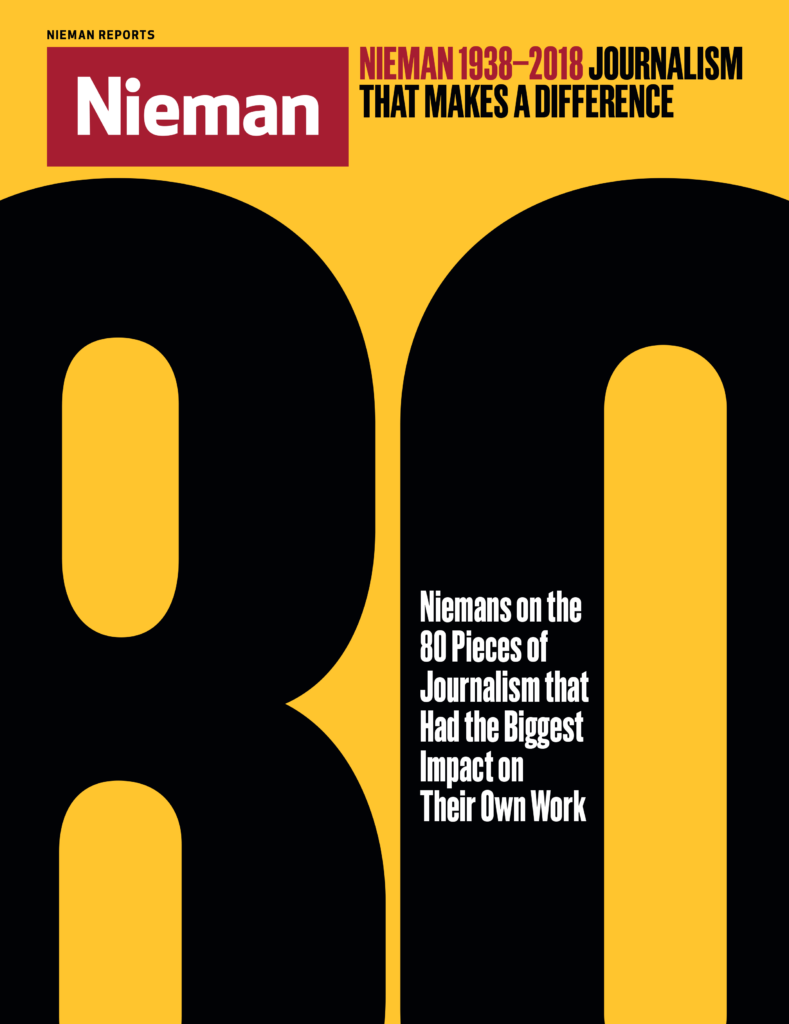
How are great journalists made? Often, it’s pieces of great journalism that help form them, influencing their lives or careers in an indelible way. To celebrate the Nieman Foundation for Journalism’s 80th anniversary in 2018, we asked Nieman Fellows to share works of journalism that in some way left a significant mark on them, their work or their beat, their country, or their culture. The result is what Nieman curator Ann Marie Lipinski calls “an accidental curriculum that has shaped generations of journalists.”
In the summer of 2015 while I was in Greece documenting the refugee crisis I had a disturbing encounter with another photojournalist. He said he doesn’t like it when refugees arrive happy, jump out of the boat, and take selfies. “I don’t even take my camera out. This is not what refugees look like,” he said. After he told me that one of his images had recently been published on the front page of a prominent newspaper, I felt demoralized, wondering if it had fed the stereotypes that make people afraid of refugees. What if the people of my native Poland, for instance, I wondered, felt a kinship with refugees and realized that refugees often are not so different from them? Would it be easier to accept refugees as neighbors? These questions haunted me. I realized that most of the visual journalism I see reinforces, not challenges, stereotypes.
While I was thinking about new ways of visual storytelling that could make me a better journalist, I experienced “The Enemy,” a virtual reality installation by Karim Ben Khelifa, NF ’13. “The Enemy” allows audiences to engage with soldiers from across enemy lines. It is designed to help people discover a shared humanity between opposing combatants in conflict zones around the world. Viewers see three-dimensional lifelike manifestations of the combatants and hear them explain what they are fighting for.
It’s one of the very few pieces of visual journalism I can think of that addresses not only the consequences of war but also causes and makes the audience participate and care. It is one of the most ambitious immersive documentary projects that I’ve come across and it left a deep impression on me. It challenges audiences’ assumptions about who fights in wars, why, and at what cost. It has inspired me to look for new ways of collaborating and visual storytelling.
The Enemy
By Karim Ben Khelifa
World premiere May 2017 at the Institut du Monde Arabe in Paris
Virtual Reality



